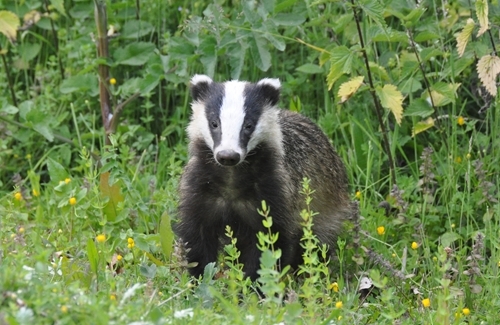
Eggs for breakfast
By Dr. Jen Brewin, Science Writer
3 minute read
Two blogs from our Scottish Demonstration Farm at Auchnerran recently have reported this year’s unusually high rates of predation on lapwing nests by badgers. We don’t yet know whether this might have been driven by higher badger numbers, the very dry early spring, or maybe a few individual badgers discovering a rich source of food, but it looks like around a third of lapwing nests will have been predated by badgers this year. Whilst such an impact of badgers has not been seen at Auchnerran since it has been in GWCT hands, we have studied the species as a predator before.
At the Allerton Project in Loddington, badgers have featured in a study of another ground-nesting bird on the farm – wild pheasants. The shoot at The Allerton Project is now based predominantly on released pheasants but the habitat management and predator control are still favourable for breeding. Despite this, pheasant breeding has not been successful, so those birds remaining at the end of the season in the springs of 2018 and 2019 were monitored, to understand what might be preventing it.
Most hen pheasants we followed at Loddington died between spring and summer – either because of predation, or from other causes followed by scavenging. Of those that survived, only three nested in 2018 and six in 2019 and none of these produced a brood. Trail cameras monitoring the nests showed that badgers were the main predator, eating the eggs from five of the nine nests. Although these are small numbers, there are also indications from other sources that badgers can impact some threatened ground-nesting birds.
Curlew Country is a project based in the Shropshire Hills and Powys borders that works with local land managers, volunteers and the wider community to protect the precious curlew that nest in the area. In the first two years of the project, 2015 and 2016, Curlew Country monitored a total of over 30 nests. More than half of the nests were predated by foxes and almost a quarter by badgers at the egg stage.
Although fox predation is perhaps a more widely understood problem, the cumulative effect of these mammalian predators can be disastrous. In these two years only three nests hatched any chicks, all of which were subsequently lost. No chicks survived to fledge in those first two years. The three nests that survived beyond egg stage in 2016 were those that had been protected by temporary electric fencing to help exclude mammal predators, but this only protected the nests themselves, being unable to protect the chicks after they were hatched and moved outside the fenced area.
The project has since introduced head-starting – the collection and incubation of eggs, followed by release of the chicks – as a short-term measure to prevent their seemingly inevitable extinction in the area, whilst wider approaches to protect their local curlew are established.
This picture seems to fit with the perception of those who live and work in the countryside – a GWCT survey on badger predation recently had over 2400 respondents, 75% of whom who felt that it was having an impact on ground-nesting birds in their area.
Badgers themselves are one species which may be considered a success story in recent times – with depressingly regular reports of wildlife declines and extinctions, the steady rise in badger numbers since the 1980s is surely good news. However, the experience of some conservation projects, farm managers and gamekeepers suggest it can add yet more pressure for some other species.
Read part 2 here >